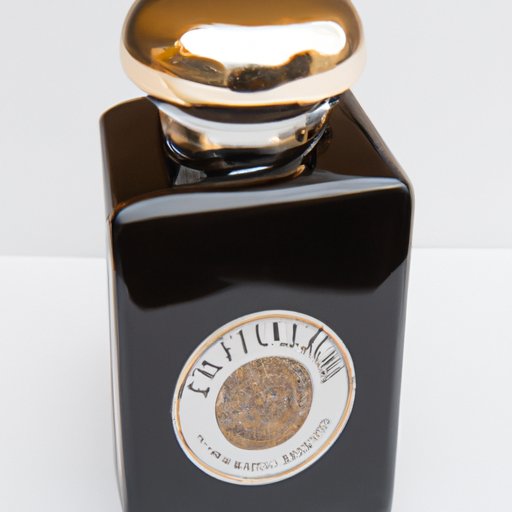A Comprehensive Guide to Truffle Oil: Understanding its Origins and Uses
Truffle oil has become an increasingly popular ingredient in recent years. This flavorful oil is made using truffles – an edible, underground fungus that grows near the roots of trees – and is used to add a unique and rich flavor to dishes. In this article, we will explore the origins and uses of truffle oil, examine the different varieties available, and provide tips for cooking with this versatile ingredient.
Exploring the Origin of Truffles and How Truffle Oil is Made
Truffles are a rare and highly prized delicacy, known for their earthy, pungent flavor and distinct aroma. Their origin can be traced back to Europe, where they have been harvested for centuries. Today, they are found in many regions around the world, including North America, Asia, and the Middle East.
Truffle oil is made by infusing olive oil or another neutral oil with truffles. The process usually involves placing fresh truffles – which may be either black or white – in a jar or bottle of oil and then allowing them to infuse the oil with their flavor and aroma over several days or weeks. The resulting oil can then be used to add truffle flavor to a variety of dishes.

Understanding the Different Types of Truffles Used to Make Truffle Oil
There are many different species of truffles, each with their own unique flavor profile and aroma. Some of the most commonly used truffles for making truffle oil include black truffles, white truffles, and summer truffles.
Black truffles, which are typically found in France, have a strong and earthy flavor that is often described as nutty or woody. They are commonly used to make truffle oil due to their relatively high availability and lower cost compared to other truffle varieties.
White truffles, on the other hand, are much rarer and more expensive than black truffles. They are typically found in Italy and have a more delicate, floral aroma. Because of their high price, white truffles are often reserved for use in high-end culinary dishes, such as truffle risotto or truffle butter.
Summer truffles, meanwhile, are a more affordable alternative to black or white truffles. They are typically harvested in the summer months and have a less intense flavor and aroma than other varieties of truffles.
Differentiating Between Real Truffle Oil and Synthetic Truffle Oil
The quality and price of truffle oil can vary greatly depending on whether it is made using real truffles or synthetic ingredients. Real truffle oil is made by infusing oil with actual truffles, while synthetic truffle oil is made using a variety of chemicals that mimic the flavor and aroma of real truffles.
While synthetic truffle oil may be cheaper than real truffle oil, it is generally considered to be of inferior quality and is often avoided by professional chefs. This is because artificial flavorings cannot replicate the complexity and depth of flavor found in real truffles.
Overview of the Uses of Truffle Oil in Cooking
Truffle oil is a versatile ingredient that can be used to add flavor to a wide range of different dishes. It is commonly used as a finishing oil, drizzled over dishes just before serving to add a burst of flavor. It can also be used as an ingredient in dressings, marinades, and sauces, as well as a substitute for butter or other oils in cooking.
Some of the most popular dishes that use truffle oil include pasta dishes, risottos, and mashed potatoes. Additionally, truffle oil can be added to grilled meats, salads, and even popcorn for a unique flavor experience.
The Debate Over Truffle Oil: Is it Real Truffle or a Synthetic Imitation?
Despite its popularity, truffle oil has long been a subject of controversy within the culinary industry. The main debate centers around whether truffle oil made using synthetic ingredients can truly be considered a genuine truffle product.
While synthetic truffle oil may be cheaper and more widely available than real truffle oil, many professional chefs argue that it does not provide the same level of flavor and complexity as real truffle oil. Some chefs go as far as to ban its use in their kitchens altogether.
Examining the Process of Making Real Truffle Oil vs Synthetic Truffle Oil
Real truffle oil is made by infusing high-quality olive oil with actual truffles. This process takes time and is relatively expensive, which is why real truffle oil is often more expensive than synthetic truffle oil. In contrast, synthetic truffle oil is made using a combination of chemicals and flavorings designed to mimic the flavor and aroma of real truffles.
While synthetic truffle oil may be cheaper and easier to manufacture, it is considered by many to be an inferior product due to its lack of depth and complexity. Additionally, many synthetic truffle oils contain additives and flavorings that can detract from the overall quality and flavor of the oil.
Highlighting the Impact of Using Synthetic Truffle Oil in Cooking
While synthetic truffle oil may be an affordable and convenient option for home cooks, it is important to be aware of its limitations and potential drawbacks. Because synthetic truffle oil is made using artificial ingredients, it may not provide the same level of flavor and aroma as real truffle oil. Additionally, synthetic truffle oil may contain additives and flavorings that can detract from the overall quality of the oil and affect the flavor of the final dish.
A Beginner’s Guide to Cooking with Truffle Oil: How to Elevate Your Dishes
If you’re new to cooking with truffle oil, there are a few tips and tricks that can help you get the most out of this versatile ingredient.
First and foremost, it’s important to choose a high-quality truffle oil made using real truffles. This will ensure that you are getting the best possible flavor and aroma from your oil.
When using truffle oil in cooking, it’s important to remember that a little goes a long way. A few drops of truffle oil can add a significant amount of flavor to a dish, so be careful not to use too much.
Truffle oil is best used as a finishing oil, added to dishes just before serving to add a burst of flavor. It can also be used in dressings, marinades, and sauces, as well as a substitute for butter or other oils in cooking.
There are many different dishes that pair well with truffle oil, including pasta dishes, risottos, mashed potatoes, grilled meats, salads, and even popcorn. And because truffle oil is so versatile, it can be used in many different cuisines, from Italian to French to Asian.
Recipe Ideas that Showcase the Versatility of Truffle Oil
Truffle oil can be used to add a unique and rich flavor to a variety of different dishes. Here are a few recipe ideas to get you started:
- Truffled Mac and Cheese – Add a few drops of truffle oil to your favorite mac and cheese recipe for a decadent and flavorful twist.
- Parmesan Truffle Fries – Drizzle truffle oil over crispy, golden-brown fries and top with parmesan cheese for a gourmet take on a classic comfort food.
- Truffle Risotto – Use truffle oil instead of butter in your favorite risotto recipe for a rich and flavorful dish.
- Truffled Scrambled Eggs – Add a few drops of truffle oil to your scrambled eggs for a simple and delicious breakfast.
- Truffle Popcorn – Drizzle truffle oil over freshly popped popcorn for a savory and addictive snack.
Exploring the Different Varieties of Truffle Oil and Their Unique Flavor Profiles
There are many different varieties of truffle oil available on the market, each with their own unique flavor profile and aroma.
Black truffle oil is perhaps the most widely available variety and has a strong, earthy flavor with notes of nuttiness and woody undertones.
White truffle oil, on the other hand, has a more delicate and floral aroma, with a light and slightly sweet taste.
Other truffle oils, such as summer truffle oil and burgundy truffle oil, offer their own distinct flavor profiles and can be used in a variety of different ways.
Pairing Suggestions to Complement Each Truffle Oil Variety
When using truffle oil in cooking, it’s important to pair it with complementary flavors and ingredients that will enhance its flavor profile. Here are a few pairing suggestions to get you started:
- Black truffle oil pairs well with hearty dishes like pasta, risotto, and grilled meats.
- White truffle oil is best used in light, delicate dishes like seafood, salads, and simple pasta dishes.
- Summer truffle oil is a great all-purpose oil that can be used in a wide range of dishes, from pasta to mashed potatoes to salad dressings.
From Gourmet Restaurants to Home Kitchens: How Truffle Oil Became a Kitchen Staple
Truffle oil was once a rare and expensive ingredient found only in high-end gourmet kitchens. But in recent years, it has made its way into mainstream cooking and is now a staple ingredient in many home kitchens.
One of the main reasons for truffle oil’s rise in popularity is its unique and versatile flavor profile. It can be used in a wide range of cooking styles and cuisines, from Italian to French to Asian. Additionally, truffle oil is relatively easy to use and store, making it a convenient ingredient to have on hand for everyday cooking.
The Possible Future Trend of the Use of Truffle Oil in Cooking
As more and more people discover the unique and delicious flavor of truffle oil, it’s likely that its popularity will only continue to grow. One possible trend for the future may be a greater focus on sustainable and ethical truffle harvesting practices, as demand for truffles continues to increase. Additionally, there may be a growing interest in using truffle oil in more unconventional ways, such as in desserts or cocktails.
Conclusion
Truffle oil is a versatile and delicious ingredient that can add a unique and rich flavor to a variety of dishes. Whether you’re a professional chef or a home cook, there are many different ways to use truffle oil in your cooking. By understanding the different types of truffles used to make truffle oil, the debate over real vs. synthetic truffle oil, and which flavor profiles pair best with different dishes, you can elevate your cooking and create dishes that are both unique and delicious.
